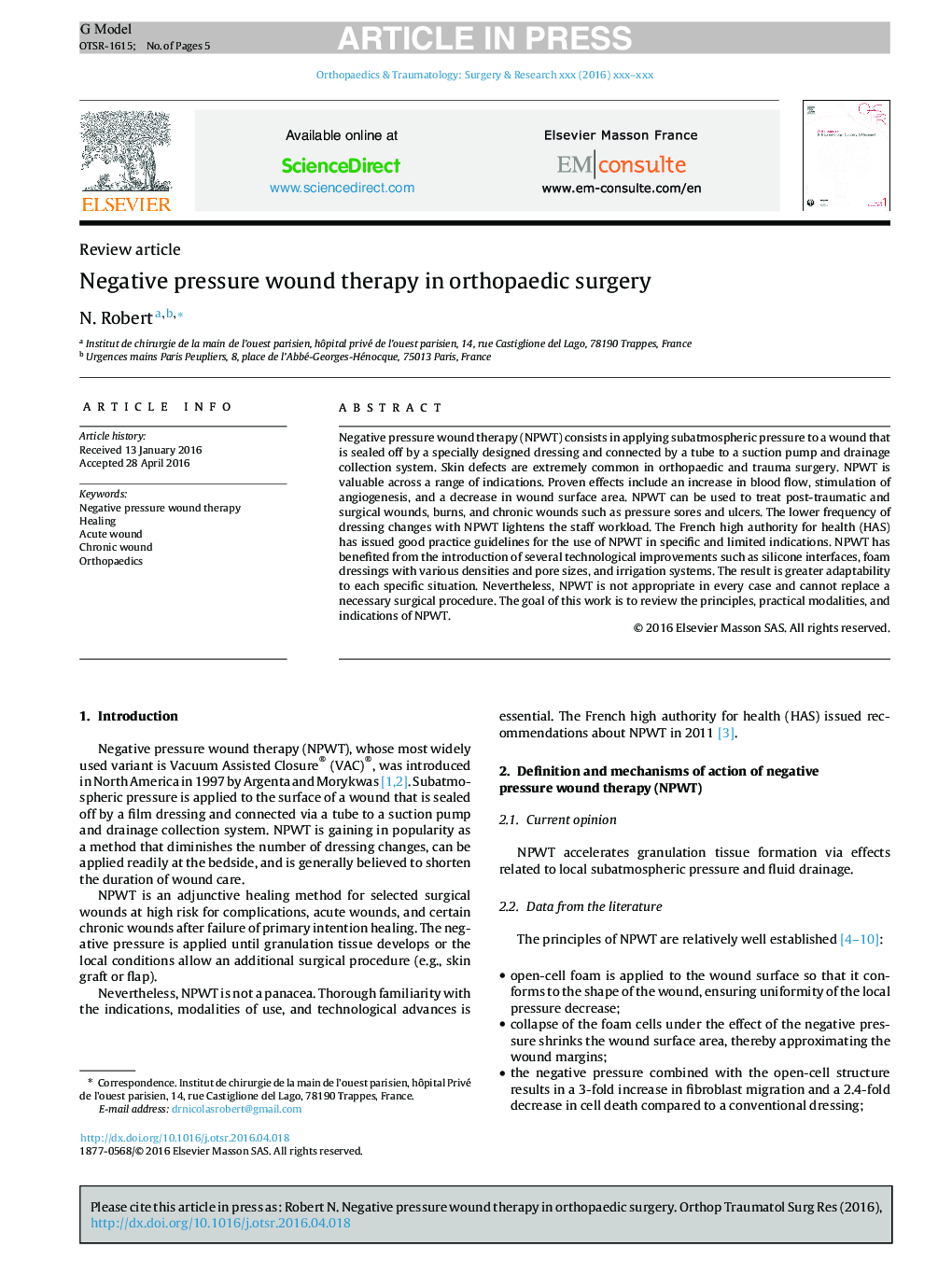| Article ID | Journal | Published Year | Pages | File Type |
|---|---|---|---|---|
| 5711189 | Orthopaedics & Traumatology: Surgery & Research | 2017 | 5 Pages |
Abstract
Negative pressure wound therapy (NPWT) consists in applying subatmospheric pressure to a wound that is sealed off by a specially designed dressing and connected by a tube to a suction pump and drainage collection system. Skin defects are extremely common in orthopaedic and trauma surgery. NPWT is valuable across a range of indications. Proven effects include an increase in blood flow, stimulation of angiogenesis, and a decrease in wound surface area. NPWT can be used to treat post-traumatic and surgical wounds, burns, and chronic wounds such as pressure sores and ulcers. The lower frequency of dressing changes with NPWT lightens the staff workload. The French high authority for health (HAS) has issued good practice guidelines for the use of NPWT in specific and limited indications. NPWT has benefited from the introduction of several technological improvements such as silicone interfaces, foam dressings with various densities and pore sizes, and irrigation systems. The result is greater adaptability to each specific situation. Nevertheless, NPWT is not appropriate in every case and cannot replace a necessary surgical procedure. The goal of this work is to review the principles, practical modalities, and indications of NPWT.
Related Topics
Health Sciences
Medicine and Dentistry
Orthopedics, Sports Medicine and Rehabilitation
Authors
N. Robert,
